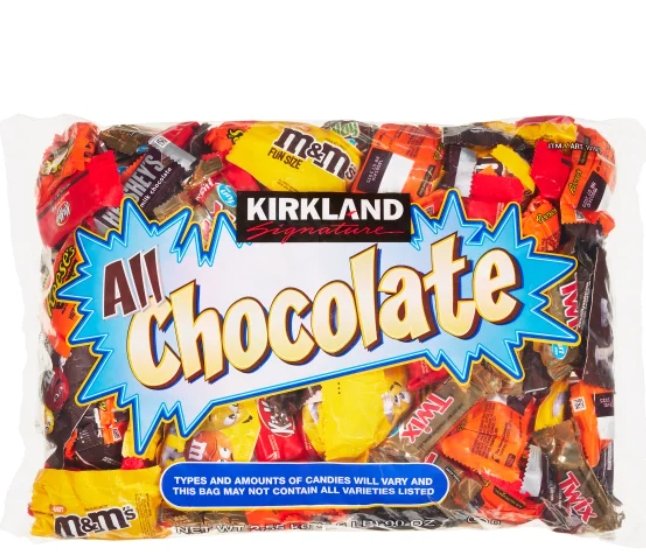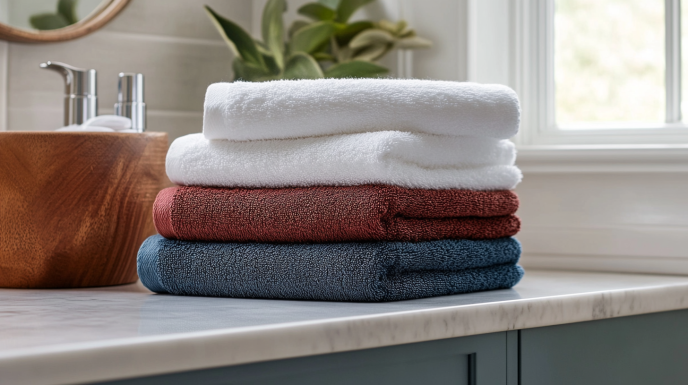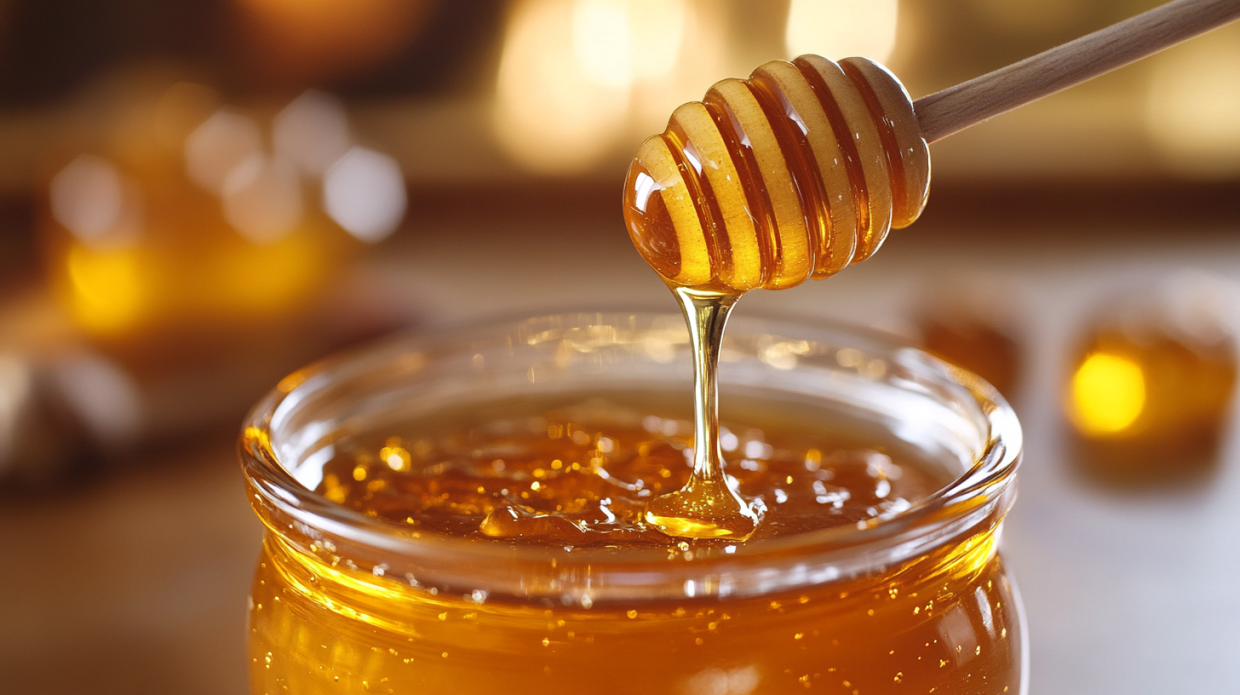
Kirkland Signature All Chocolate Bag, 90 oz,
- Variety Pack
- Ten Different Types of Candies
- Types and amounts of candies will vary and this bag may not contain all varieties listed
- Kosher
Unwrapping the Hidden Gem of Costco’s Signature Brand
There’s something deeply comforting about breaking off a square of rich, velvety chocolate and letting it slowly melt on your tongue. The way good chocolate releases its complex flavors in waves—first sweet, then bitter, perhaps with notes of fruit or nuts—is one of life’s simple yet profound pleasures. When it comes to satisfying this craving without breaking the bank, Kirkland Signature chocolate stands as one of the best-kept secrets in the confectionery world.
I still remember my first encounter with Kirkland chocolate. Wandering through the endless aisles of Costco on a rainy Sunday afternoon, I stumbled upon a massive package of chocolate-covered almonds that would change my relationship with store-brand chocolate forever. That day marked the beginning of a delicious journey into the world of Kirkland’s chocolate offerings—a journey I’m excited to share with you today.
The Kirkland Chocolate Family: A Diverse Collection
Kirkland Signature, Costco’s private label brand, has built a reputation for delivering quality products at competitive prices, and their chocolate selection is no exception. The range is impressively diverse, catering to different taste preferences and occasions.
The foundation of their chocolate lineup includes classic varieties: milk, dark, and white chocolate. But Kirkland doesn’t stop there. Their selection extends to chocolate-covered nuts (those almonds I mentioned earlier are legendary among Costco enthusiasts), chocolate-enrobed fruits, European chocolate assortments, and seasonal specialties that appear throughout the year.
One of their most popular offerings is the Kirkland Signature European Cookies with Belgian Chocolate. These butter cookies, partially dipped in rich Belgian chocolate, come in a distinctive red tin that has become synonymous with holiday gatherings in many households. Similarly beloved are their chocolate-covered sea salt caramels, which strike that perfect balance between sweet and salty.
For those who prefer their chocolate in more portable form, Kirkland offers individually wrapped chocolate squares in various flavors. These are perfect for keeping in your desk drawer for that mid-afternoon energy boost we all sometimes need.
Their seasonal offerings deserve special mention too. During the holidays, you might find Kirkland Signature Peppermint Bark—layers of dark and white chocolate infused with cooling peppermint. Around Valentine’s Day, heart-shaped assortments appear, while Easter brings chocolate eggs and bunnies to the shelves.
Quality Ingredients: What Goes Into Kirkland Chocolate?
One question that often arises when discussing store brands is whether they cut corners on ingredients. In the case of Kirkland chocolate, the answer is a resounding no. Kirkland Signature chocolate is made with real cocoa butter—a crucial component that gives chocolate its smooth mouthfeel and proper melting properties.
The ingredients list on Kirkland chocolate products is refreshingly straightforward. Take their dark chocolate, for example. You’ll find cocoa mass, sugar, cocoa butter, and vanilla—essentially what chocolate should be, without unnecessary additives or fillers. Their milk chocolate adds milk solids to the mix, creating that creamy flavor profile that milk chocolate lovers crave.
For those concerned about the cocoa percentage in dark chocolate (an indicator of intensity and bitterness), Kirkland’s dark chocolate typically ranges from 53% to 72% cocoa, depending on the specific product. This range accommodates both those who prefer a milder dark chocolate experience and those who enjoy the robust flavor of higher cocoa percentages.
What about allergens and dietary restrictions? Here’s where attention to detail becomes important. Many Kirkland chocolate products do contain milk ingredients, making them unsuitable for vegans. Some varieties, particularly those with inclusions like nuts, may contain allergens such as tree nuts. Most Kirkland chocolate products are gluten-free, but as always, checking the specific product packaging is recommended for those with celiac disease or gluten sensitivity.
It’s worth noting that Kirkland chocolate does not typically contain artificial preservatives or flavors, which is a significant advantage for those looking to avoid such additives in their treats.
The Ethical Chocolate Question: Sourcing and Sustainability
In today’s conscious consumer landscape, the ethics behind chocolate production is increasingly important. The cocoa industry has a complicated history involving labor issues and environmental concerns, making ethical sourcing a critical consideration for many chocolate lovers.
While Kirkland Signature doesn’t extensively market their chocolate as fair-trade certified, Costco as a company has made commitments to ethical sourcing across their product lines. They’ve pledged to ensure their cocoa supply chains are free from forced labor and have worked with suppliers to improve sustainability practices. That said, not all Kirkland chocolate products carry explicit fair-trade certification, which might be a consideration for shoppers who prioritize such certifications.
For environmentally conscious consumers, it’s worth noting that Costco has been making strides in sustainable packaging initiatives, though there’s still progress to be made in reducing the environmental footprint of their chocolate packaging, which often involves plastic.
Value Proposition: The Price of Indulgence
One of the most compelling aspects of Kirkland chocolate is its value proposition. Costco’s business model of bulk sales and limited markups translates to significant savings compared to premium chocolate brands with similar quality.
To put this in perspective, Kirkland Signature chocolate-covered almonds might cost around $12-15 for a 32-ounce container—a price point that would typically get you less than half that amount from brands like Ghirardelli or Godiva. Similarly, their European chocolate assortments offer substantial savings compared to imported chocolates of comparable quality.
This value aspect becomes particularly apparent during holiday seasons when chocolate giving is traditional. A large tin of Kirkland’s Belgian chocolates can cost less than half the price of similar offerings from specialty chocolate retailers, making them an excellent choice for gift-giving or entertaining on a budget.
The Taste Test: How Does Kirkland Chocolate Compare?
Value is one thing, but the crucial question remains: How does Kirkland chocolate taste compared to more expensive brands? Having sampled extensively (for research purposes, of course), I can offer some insights.
Kirkland’s milk chocolate has a creamy, smooth texture with a balanced sweetness that compares favorably with brands like Lindt. It doesn’t have quite the melt-in-your-mouth quality of Ghirardelli, but it comes surprisingly close given the price difference.
Their dark chocolate deserves special praise. With proper tempering and good cocoa content, Kirkland dark chocolate exhibits the complex flavor notes that dark chocolate enthusiasts seek—hints of fruitiness, slight bitterness, and a clean finish without waxy residue.
The chocolate-covered nuts and fruits showcase Kirkland’s quality control. The chocolate coating is generously applied and properly tempered, creating that satisfying “snap” when bitten into. The nuts, particularly the almonds, are consistently fresh and crunchy—a detail that can make or break chocolate-covered nut products.
Where Kirkland truly shines is in their Belgian chocolate offerings. These products, often manufactured in Belgium specifically for Costco, demonstrate craftsmanship that can stand alongside much more expensive European imports. The European cookie assortment, with its delicate butter cookies partially dipped in Belgian chocolate, has become something of a cult favorite among Costco shoppers.
That said, the most discerning chocolate connoisseurs might notice differences in complexity and nuance compared to artisanal chocolatiers who focus on single-origin beans and small-batch production. Kirkland chocolate is excellent for what it is—high-quality commercial chocolate—but it doesn’t attempt to compete with the most premium specialty chocolates on the market.
From Pantry to Plate: Cooking with Kirkland Chocolate
Beyond direct consumption, Kirkland chocolate proves remarkably versatile in the kitchen. Its reliable quality and reasonable price make it an excellent choice for baking and cooking applications where large quantities of chocolate are needed.
For chocolate chip cookies, the individually wrapped squares can be chopped into perfect chunks—larger than standard chips, creating pockets of melted chocolate that transform ordinary cookies into bakery-worthy treats. The chocolate melts beautifully without separating, a sign of proper cocoa butter content.
Kirkland’s dark chocolate works wonderfully in ganache for cakes and truffles. Its clean flavor profile allows it to shine without overwhelming other ingredients. Similarly, their milk chocolate makes for excellent homemade hot chocolate—rich and creamy without being excessively sweet.
For more advanced applications, like tempering chocolate for dipped strawberries or homemade bonbons, Kirkland chocolate behaves predictably, which is exactly what you want when working with chocolate. The proper cocoa butter ratio means it sets with a nice shine and snap when properly tempered.
Here’s a simple yet impressive dessert that showcases Kirkland dark chocolate beautifully:
Dark Chocolate Pots de Crème
- 8 ounces Kirkland dark chocolate, chopped
- 2 cups heavy cream
- 1/4 cup sugar
- 6 egg yolks
- 1 teaspoon vanilla extract
- Pinch of salt
- Whipped cream and chocolate shavings for garnish
Heat the cream until just simmering. Pour over the chopped chocolate and let stand for a minute before stirring until smooth. Whisk sugar, egg yolks, vanilla, and salt in a separate bowl. Slowly add the chocolate mixture while whisking. Strain into ramekins and bake in a water bath at 325°F for about 30 minutes until just set. Chill thoroughly before serving with whipped cream and chocolate shavings.
Availability: Where to Find Kirkland Chocolate
As the name suggests, Kirkland Signature products are primarily available at Costco warehouse locations. This exclusivity is both a strength and limitation of the brand. On one hand, it ensures quality control and allows for the value pricing that makes these chocolates so attractive. On the other hand, it means you’ll need a Costco membership (currently around $60-120 annually, depending on the tier) to access them in store.
The good news for chocolate lovers without Costco access is that some Kirkland products, including certain chocolate offerings, have become available through Amazon and other online retailers. However, the pricing through these channels typically doesn’t match the value found in Costco warehouses, as third-party sellers add their own markups.
The selection of Kirkland chocolate also varies seasonally and by location. While staples like the chocolate-covered almonds are nearly always available, seasonal specialties and certain assortments might appear only at specific times of the year or in particular regions.
Consumer Consensus: What Chocolate Lovers Say
The true measure of any chocolate comes from those who enjoy it regularly. Across various consumer forums, social media groups, and review platforms, Kirkland chocolate consistently earns positive feedback.
The chocolate-covered almonds frequently appear on “must-buy” lists for Costco shoppers, with many noting the consistent quality and freshness. Similarly, their Belgian chocolate assortments often receive mention as “hidden gems” that offer exceptional value compared to specialty chocolate shops.
Professional food writers and bloggers have also taken notice. Several major food publications have included Kirkland chocolate products in their roundups of best store-brand foods, with particular praise for their European chocolate assortments and chocolate-covered nuts.
Even more telling are the dedicated fans who stock up on seasonal specialties like the peppermint bark or European cookie assortments, sometimes buying multiple containers to last until the next holiday season. This kind of consumer loyalty speaks volumes about the satisfaction level with these products.
Dietary Considerations: Inclusivity in Indulgence
With increasing awareness of dietary restrictions and preferences, how does Kirkland chocolate fare in terms of inclusivity?
For those following gluten-free diets, most Kirkland chocolate products are naturally gluten-free, though cross-contamination can be a concern for those with celiac disease. The plain chocolate varieties are generally safe, while assortments with cookies or wafers typically contain gluten.
Regarding sugar content, Kirkland has yet to develop a comprehensive line of sugar-free or low-sugar chocolate options. This remains an area where specialty brands still have an advantage for those monitoring sugar intake.
For vegetarians, most Kirkland chocolate products are suitable, containing dairy but no meat-derived ingredients. Vegans, however, will find fewer options, as most Kirkland chocolate contains milk ingredients. Currently, there isn’t a dedicated vegan chocolate offering in the Kirkland line.
Nut allergies require careful attention with Kirkland chocolate. Many of their popular products, like chocolate-covered almonds and assorted chocolates, either contain nuts or are produced on equipment that processes nuts. Always check individual product packaging for the most current allergen information.
The Future of Kirkland Chocolate: Trends and Possibilities
As consumer preferences evolve, so too does the Kirkland Signature line. Recent years have shown Costco’s responsiveness to trends in the food industry, suggesting some possible directions for their chocolate offerings.
One area ripe for development is origin-specific chocolate. As consumers become more educated about how growing regions affect chocolate flavor profiles, single-origin chocolates have gained popularity. Kirkland could potentially expand into this space, offering region-specific dark chocolates that highlight the unique characteristics of cocoa from different parts of the world.
Another growth opportunity lies in plant-based alternatives. With the rise of dairy-free eating, a vegan Kirkland chocolate option would likely find a receptive audience. Similarly, reduced-sugar and sugar-alternative chocolates represent an underserved segment in their current lineup.
Sustainability certifications present another avenue for evolution. While Costco has made commitments to ethical sourcing, more visible certifications on their chocolate products—such as Rainforest Alliance or Fair Trade markers—would appeal to increasingly conscious consumers.
Finally, functional chocolate—infused with ingredients like adaptogens, CBD, or added protein—represents an emerging trend that Kirkland might eventually explore, though such innovations typically appear first in specialty brands before making their way to private labels.
Conclusion: The Sweet Spot of Quality and Value
In a world where premium chocolate can command astronomical prices, Kirkland Signature chocolate occupies a unique position. It delivers quality that satisfies all but the most demanding chocolate connoisseurs while maintaining price points that make it accessible for everyday enjoyment.
This balance—quality without pretension, value without compromise—exemplifies the Kirkland Signature philosophy. The true luxury of Kirkland chocolate isn’t found in fancy packaging or marketing but in the simple pleasure of enjoying good chocolate frequently rather than reserving it as a rare indulgence.
Whether you’re a dedicated chocolate enthusiast or simply someone who appreciates a square of something sweet with your afternoon coffee, Kirkland chocolate offers a compelling proposition. It reminds us that quality chocolate needn’t be exclusive or expensive—that the joy of chocolate can be democratized without sacrificing what makes it special.
So the next time you find yourself wandering the aisles of Costco, consider adding some Kirkland chocolate to your cart. Whether it’s the classic chocolate-covered almonds, an assortment of Belgian chocolates, or a seasonal specialty, you’ll likely find yourself, as I did years ago, pleasantly surprised by how much quality can be found in this unassuming store brand.
In a world that often equates price with quality, Kirkland chocolate stands as a delicious reminder that some of life’s pleasures can be both excellent and accessible. And isn’t that something worth celebrating?




